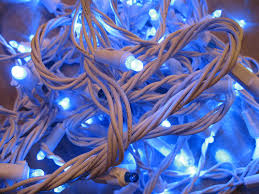 |
| Energy ball x super? |
1)Yes, by placing a finger on both metal strips. The light/humming device is probably connected to the battery but has a gap in the circuit, the two metal strips. By placing your fingers on both metal strips, you complete the circuit, therefore lighting/humming the light/hummer thing.
2)You need to touch both metal contacts because if you just touch one of the metal contacts, you do not complete the circuit. Therefore you must touch both of the metal contacts for it to work.
3)Yes and no, depending on the material. Some materials have more resistance and do not allow electricity to pass such as rubber, cotton, plastic, wood and other things. On the other hand however, some materials have less resistance, aka, a conductor, allows electricity to pass freely/pretty freely, therefore completing the circuit.
 |
| Example of parallel circuit for question 11. |
4)Materials that allows electricity to pass pretty well are metal rings from binders, flesh, your mother, your face, water, pencil case zipper thing and key ring thing.
5)The ball may not light up or hum when the current travels through some individuals because of lower sodium/salt levels. Since salt is a very good conductor when it is in a liquid, we conduct electricity because we have salt in our bodies. However, some people might have lower sodium levels, also known as hyponatremia. These problems could cause the individual to not conduct electricity as well as others.
6)Yes, the energy ball works with 5 – 6 individuals in my group. It also works with the whole class, as long as the electricity can pass through every individual properly, the circuit will complete and the ball with light up and hum.
7)You will create a simple circuit when you form a circuit with 1 ball.
8)Yes you can.
 |
| Example of parallel circuit done by 1 person. |
9)The ball with cease to light up/hum. Since the ball only lights up/hums when the circuit is complete, as one person lets go then the circuit breaks therefore no light or humming.
10)No, it doesn’t matter who lets go, as long as the circuit is broken then it doesn’t work.
11)Yes, by creating a parallel circuit with one person as the switch.
12)It CAN be done with 1 person with 4 of their fingers acting as the wires of the circuit and 1 finger moving back a forth as a switch.
 |
| Series circuit. |
In a series circuit, you have loads connected one after the other, similar to old Christmas lights. However, the problem is that all devices in the circuit must work or else the whole thing will not work. The reason behind this is that if one device does not work, then the current cannot pass and on to the other devices. Also, even if an earlier device might still work, the circuit is still not completed and therefore all of them do not work. A disadvantage of the series circuit is that if one or two don’t work then it will be a hassle to find which ones don’t work because they will all fail, like old Christmas lights.
 |
| CHRISTMAS LIGHTS!!!! |
In a parallel circuit, two or more devices are connected side by side. The main principle to comprehend about parallel circuits is that all the devices in the circuit have equal voltage. Parallel circuits are much safer, in a sense that if one breaks down or malfunctions then the rest will still work. Also, if a device breaks down then you can easily identify it because it will be the only one that doesn’t work, similar to new Christmas lights.

















